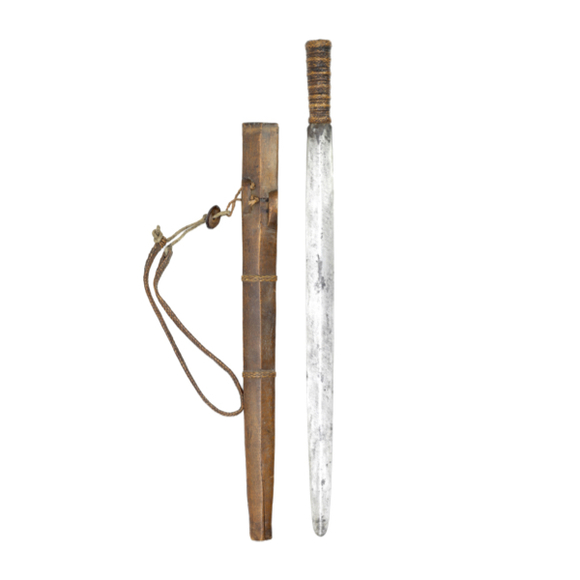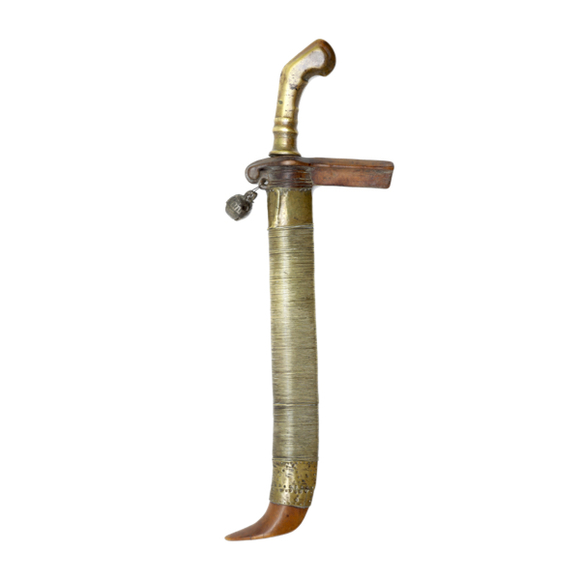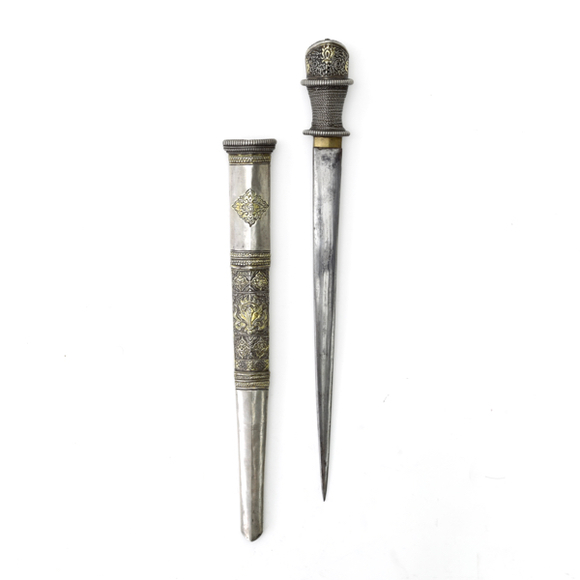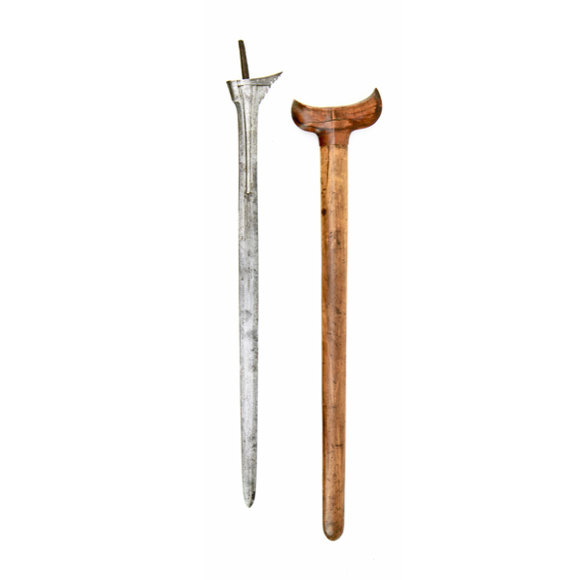Rare double-edged shortsword of the Ifugao of northern Luzon.
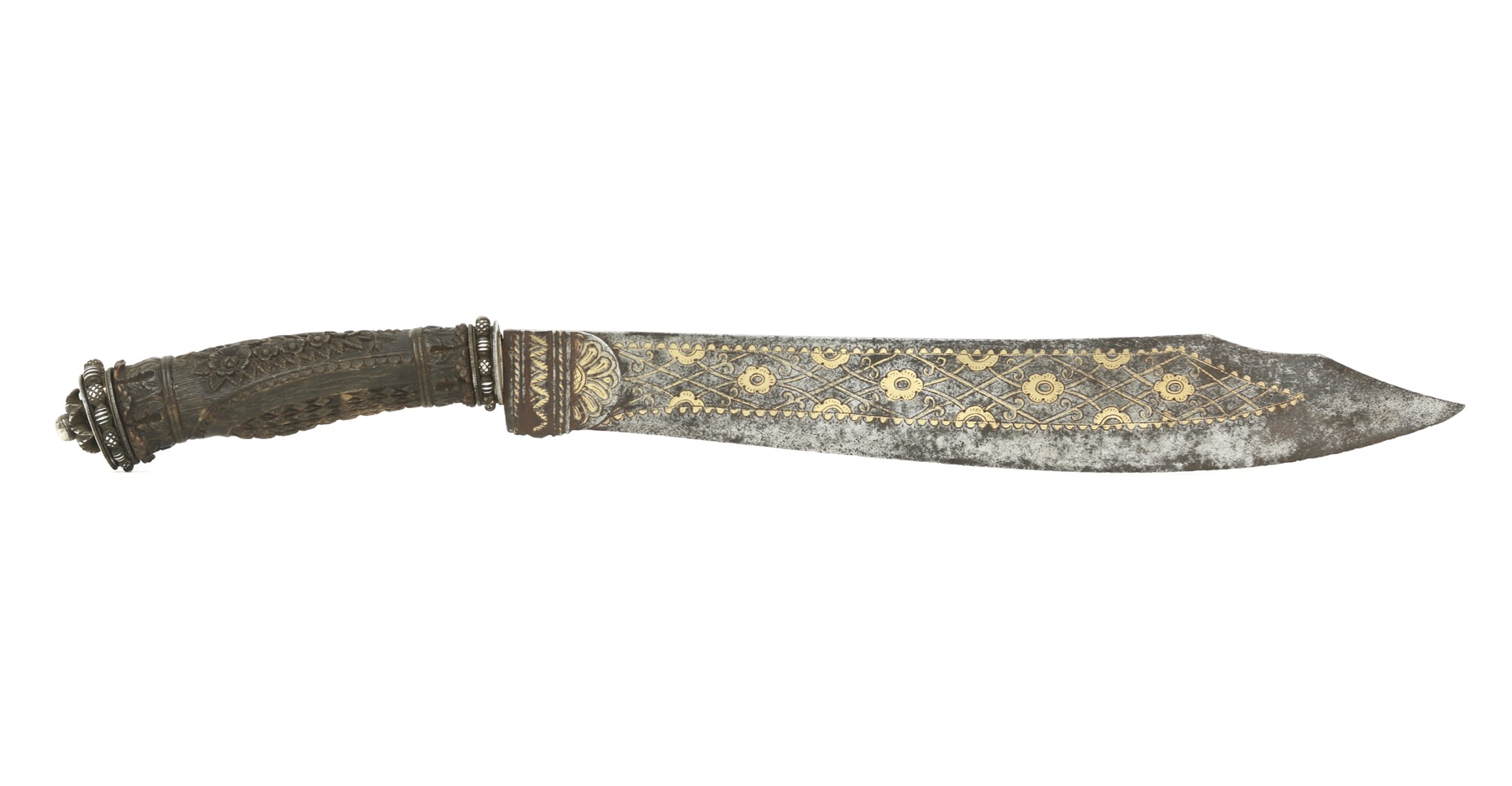
46.8 cm
31.8 cm
Base 7.5 mm
Middle 4 mm
At widest 3.5 mm
Base (narrow part) 33.5 mm
Middle 41.5 mm
Widest 45 mm
493 grams
4.7 cm from hilt
Luzon, the Philippines
Iron/steel, silver, brass, buffalo horn
18th or 19th century
Introduction
Knife fighting has long been a well-established art in the Philippines, and the machete-like bolo has been the iconic weapon of guerrilla fighters up until as late as World War II.
Most bolos are fairly plain, utilitarian weapons but there is a small group that stands out above the rest in workmanship.
This example
A rather fine example with a strong blade with gentle widening, and a clipped tip with scalloped back profile, reminiscent of some Chinese blades.
Similar blades can be seen in the hands of people on the Philippines as far back as the 16th century, for example in the Boxer Codex of circa 1590:
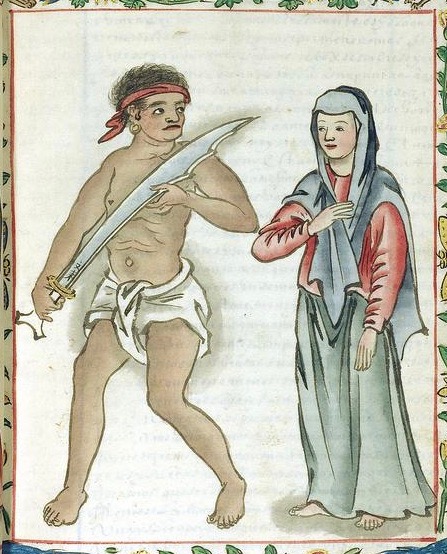
Couple described as "Burney", probably from Borneo.
Boxer Codex of 1590 A.D.
Notice the scalloped back in the above picture, and the Chinese marks at the base of blade suggesting that it was an import. This is no artist's convention: The shape coincides with what we see on Ming artwork from the same period.
The blade has geometric designs and flowers on the right side, inlaid in brass, but is plain on the left side as is usually the case on these.
At the base of the blade is a decorative collar, is chiseled from the blade itself, depicting a flower half-concealed behind a rectangular base.
Hilt
The hilt is capped on both sides with two silver plates that hold an ornamented ring. Each plate is ribbed on the side, resembling the edge found on some coins. The hilt is held at the back by a round nut, seated against a silver palmate washer.
The grip itself is finely carved from water buffalo horn. A fine pattern of diamonds carved in relief provides grip on the underside, while the back is beautifully carved with leaves and flowers.
At either end of the grip are acanthus leaves folding back on themselves, reminding strongly of such designs found on for example pillars in the European rococo style.
These various design influences are to be expected in the cultural melting pot that the Philippines have been over the ages.
Comparable examples
Philippine knives of this kind of quality are quite rare. It seems to be part of a very small group of similar pieces, the blades of which vary but their grips tend to be nearly identical. For example, see Metropolitan Museum accession number 36.25.2898a, b for a fine example that came from the George Cameron Stone collection. It is dated 18th - 19th century.
Conclusion
One of the finest Philippine knives I have seen so far on the market. It's part of a small and illustrious group, one of which is held in the Metropolitan Museum.

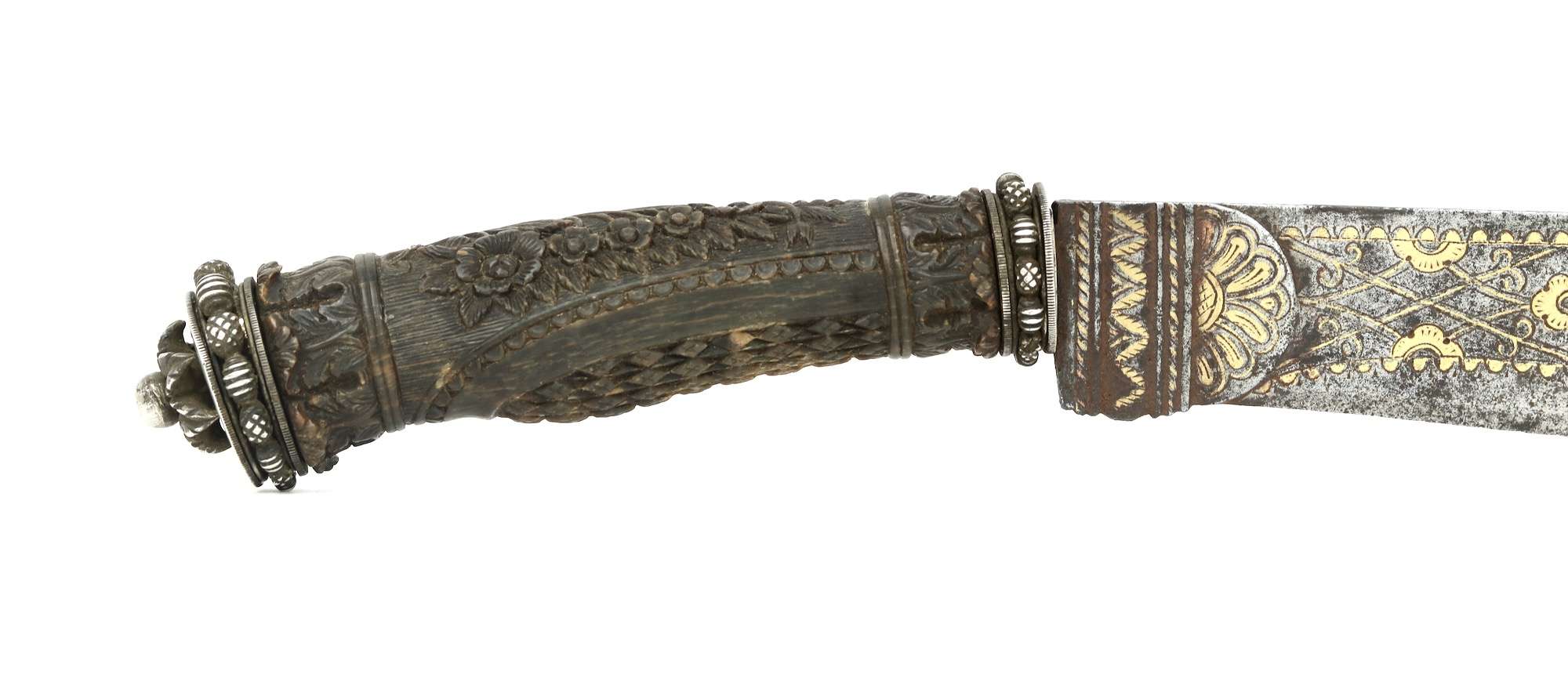


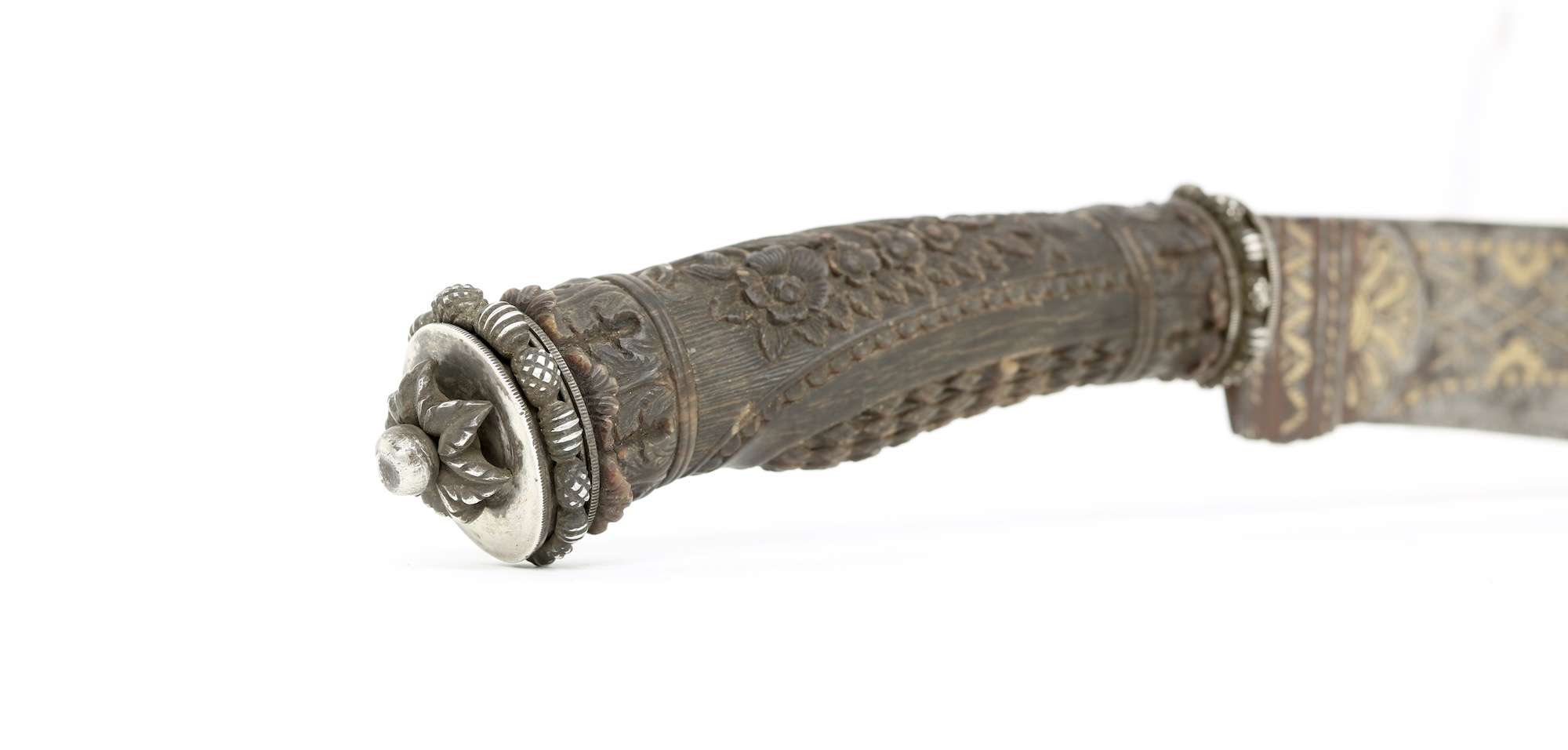


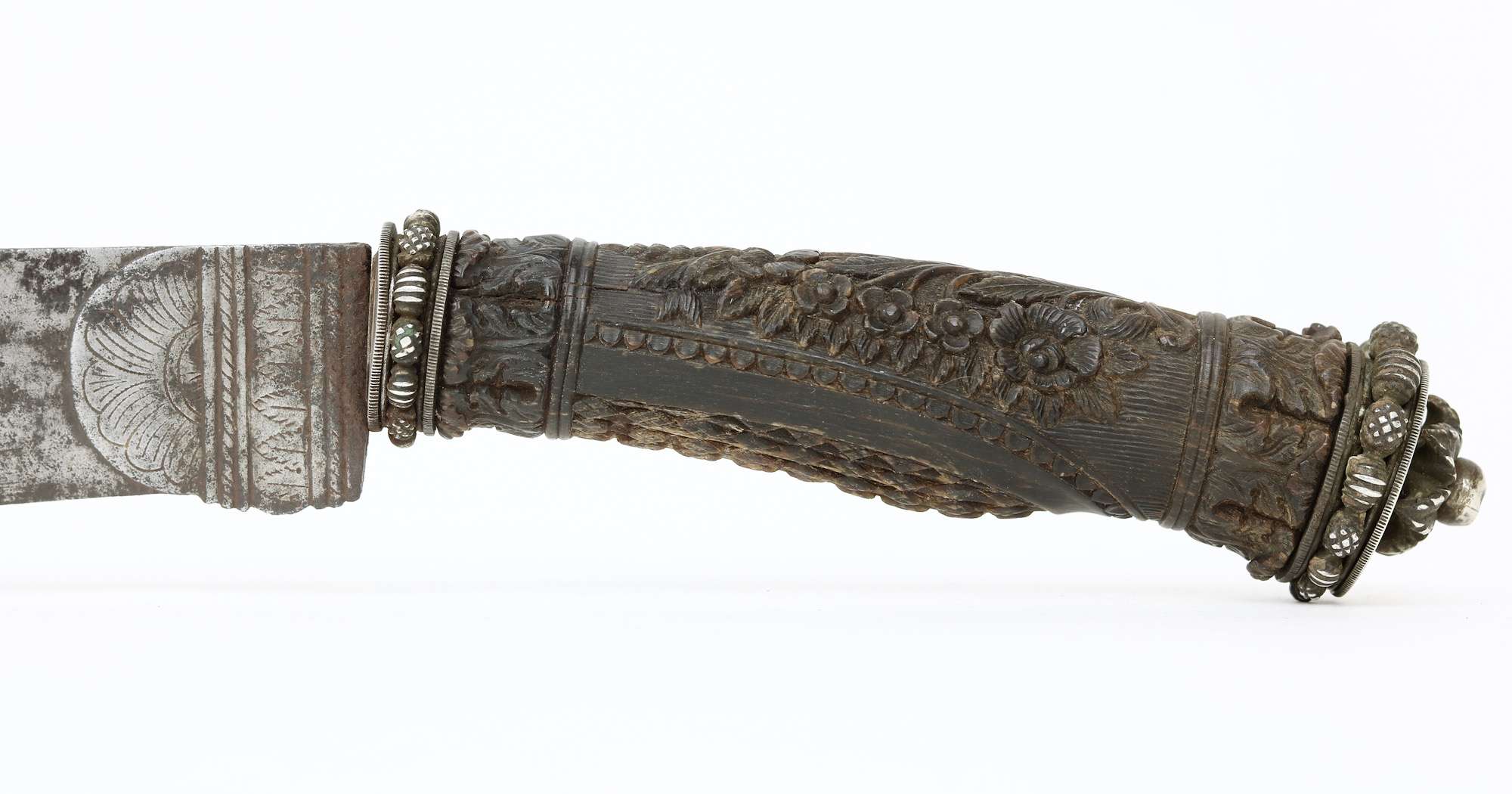
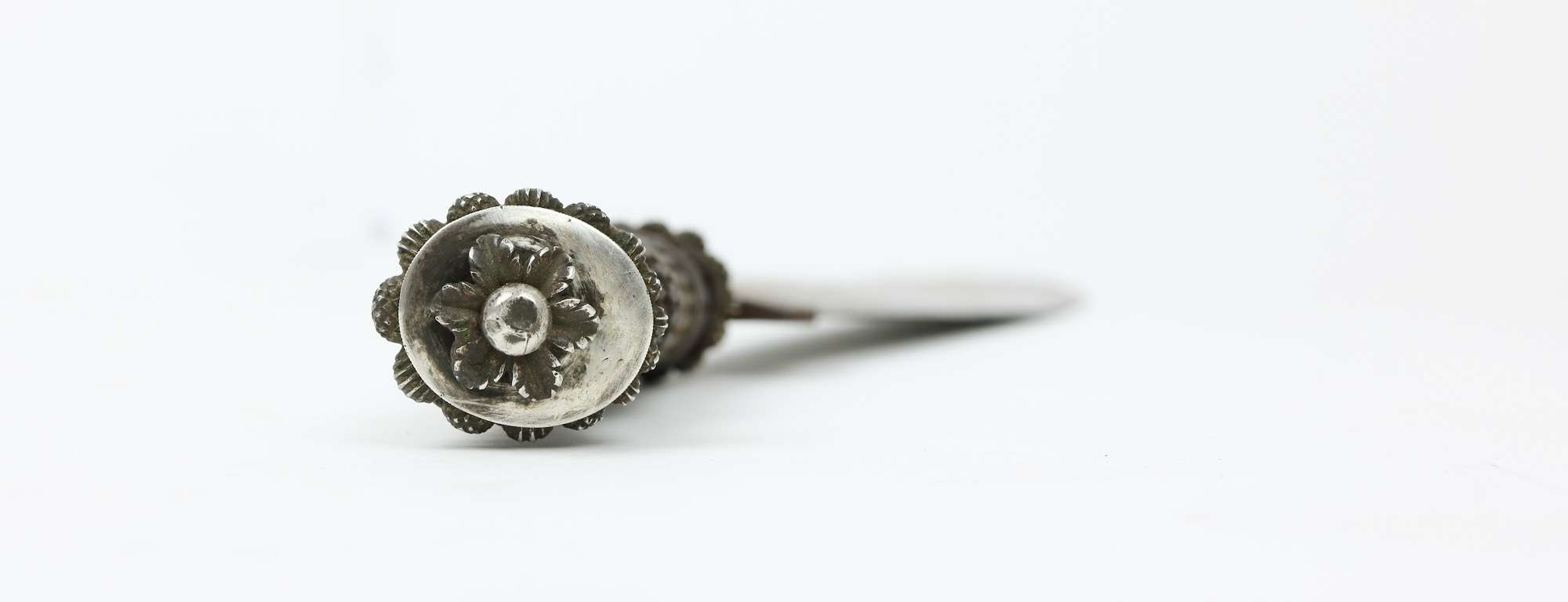
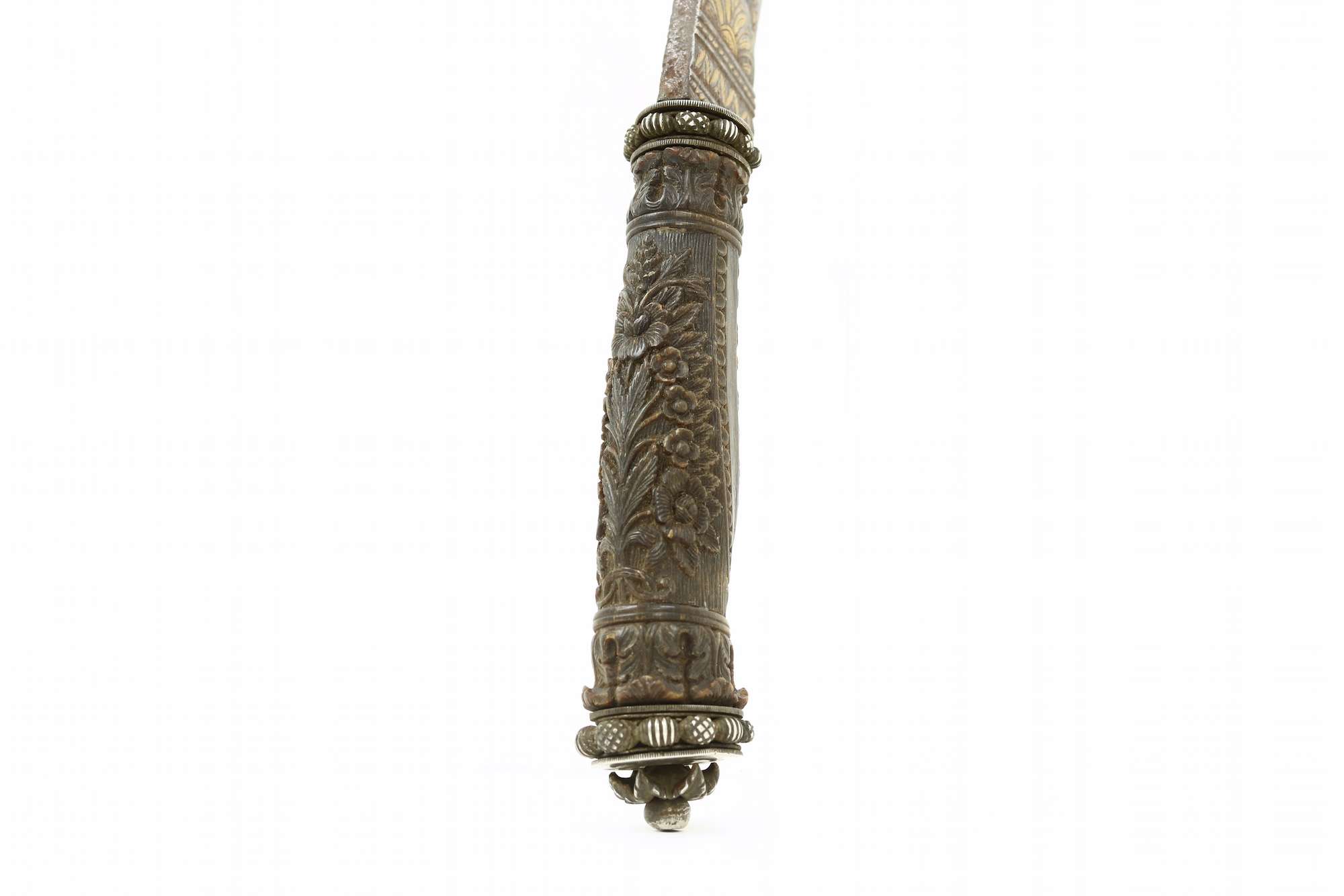

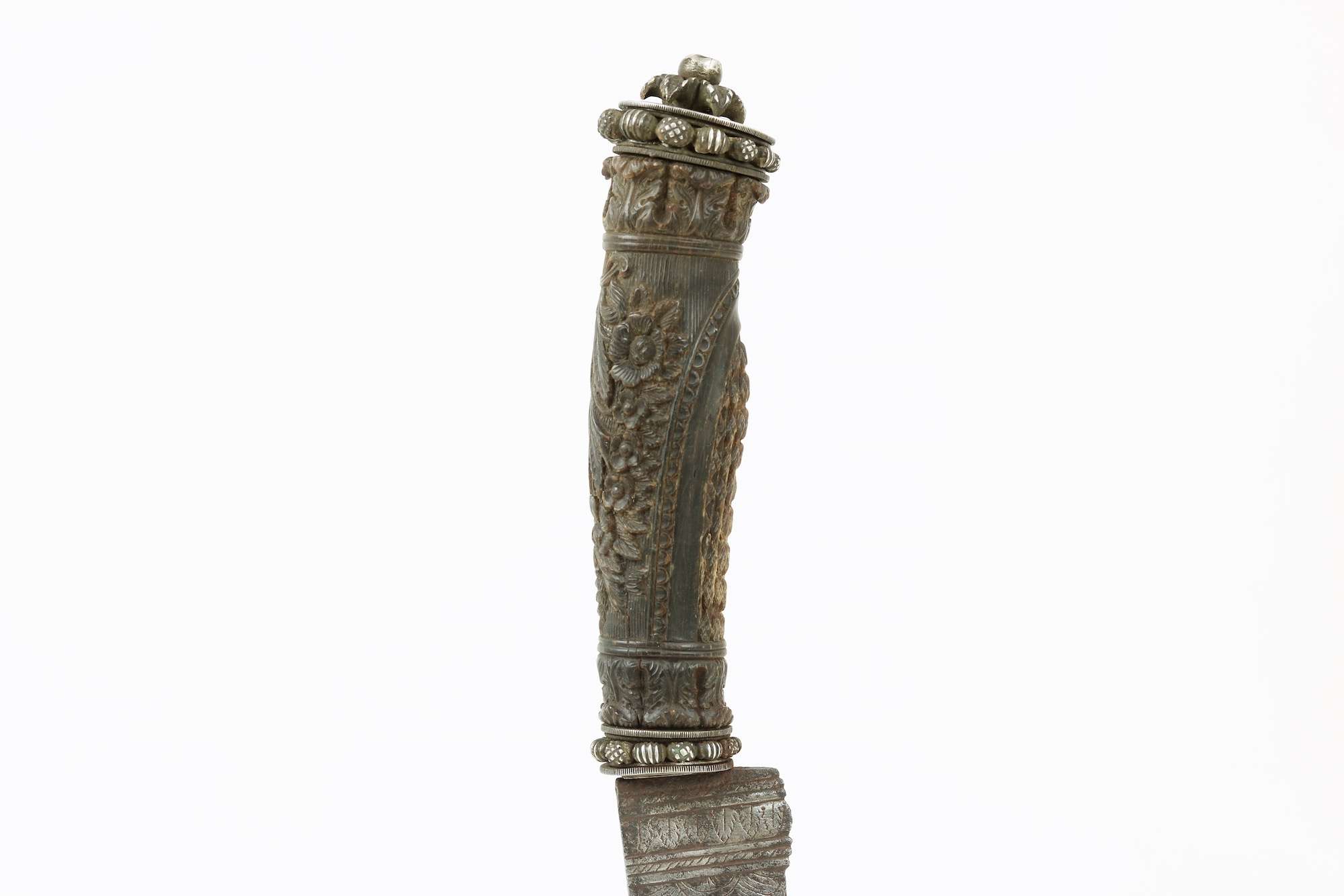
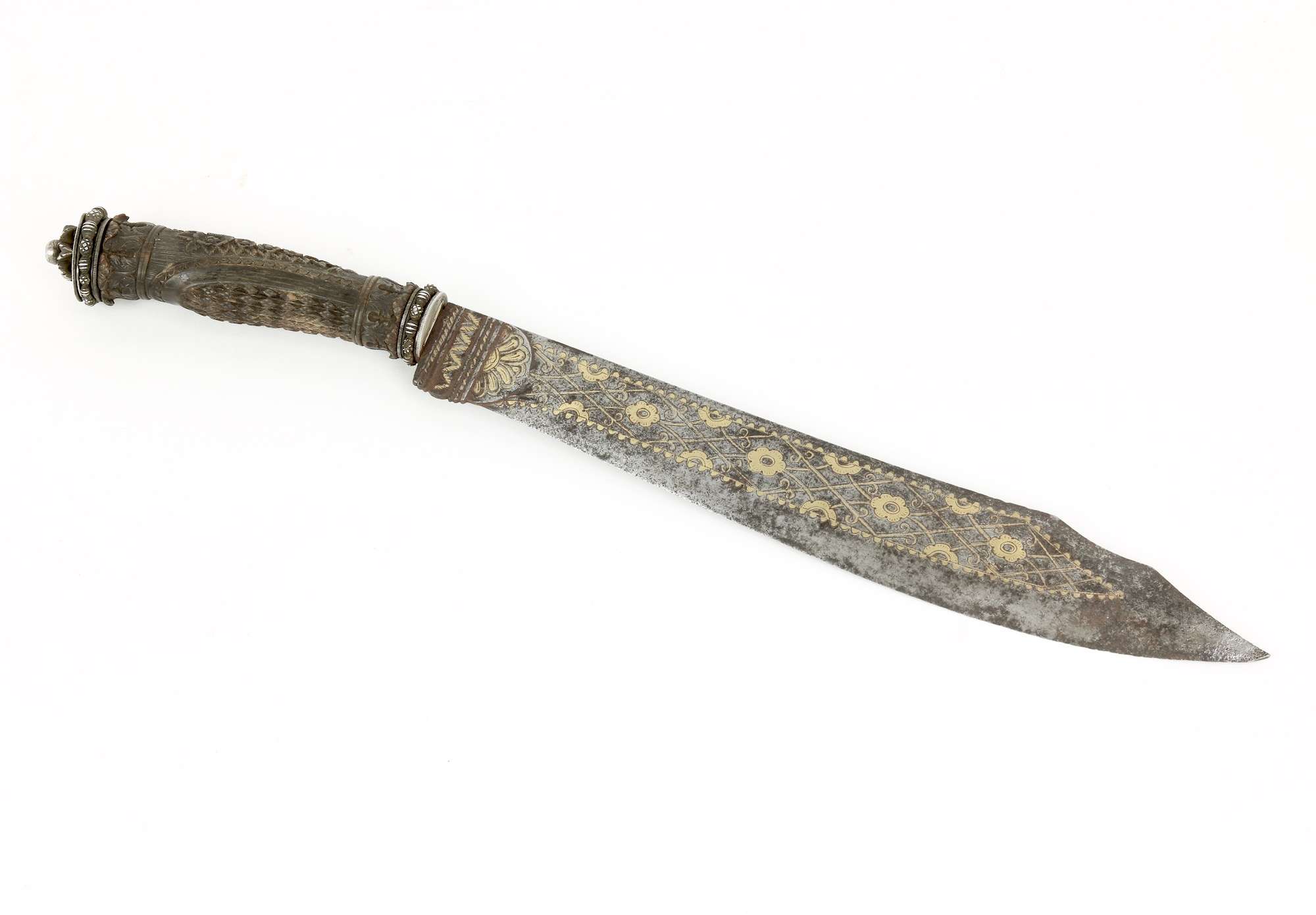
The Yagami school were excellent carvers of iron, known for their 1000 monkey designs.
A small pointy Bhutanese dagger in a silver scabbard of a style associated with the ruling house.
Fine work and one of the very few enamelled tsuba by this maker.

